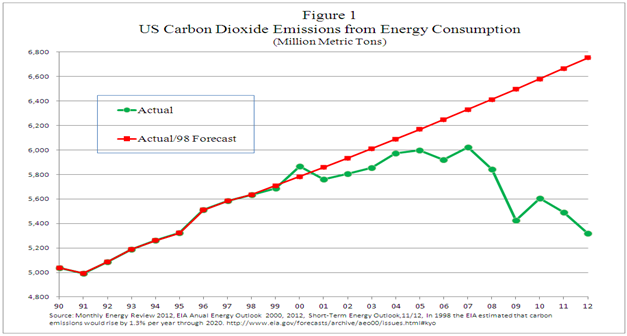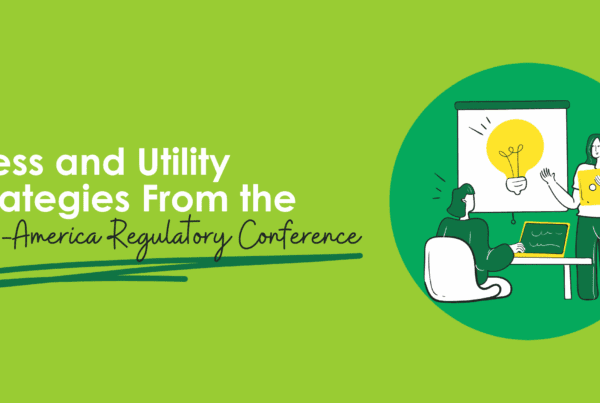
June 1, 2017. Does that ring a bell? To many, it is a day of infamy – the day Trump bid adieu to the Paris climate deal, accord, treaty, or whatever (Paris). Since then, I have read many an article, LinkedIn posts, and Tweets filled with wailing and gnashing of teeth. Was Paris that good? Does anyone reading this know the details? I decided to dig in and synthesize it to hors devours, which seems kind of French. Right?
The broad objectives of the agreement include three things:
- Hold temperatures to well within 2 degrees C relative to pre-industrial temperatures.
- Preserve food production.
- Something about money flow and paying for it.
Parallels of Paris and Rudolph
My favorite Christmas show far and away as a kid was Rudolph the Red Nosed Reindeer. What a perfect metaphor for the Paris agreement, except on Rudolph, the furry snow monster had a mouthful of great-white sharp teeth. That was before Hermie the elf and wannabe dentist, along with his pal Yukon Cornelius defanged the bumbling buffoon. You may recall Hermie luring the snow monster out of the cave. Oink. Oink.
Ready?
Snow monster played by Paris Treaty
Hermie played by Scott Pruitt, the head of the EPA.
Yukon played by the Donald, Trump.
Trump drives the Snow monster, er Paris over the cliff. Will Paris come back to put the star on top of the tree in the end? Stay tuned.
Now for reality. The feisty Holman Jenkins of The Wall Street Journal writes that any agreement signed by 195 countries is pretty much worthless.
Have you sat on a board or in a meeting of more than one person and everyone agrees to anything close to the massivity of the Paris treaty? Heeyaah. I don’t think so.
Whatever such an agreement says, what would happen, will happen anyway. In other words, “Oooh, rather than a 1000 MW natural gas plant we must build a 3000 MW wind farm and a zillion dollar battery storage facility to hold 60,000 MWh of electricity.” That isn’t going to happen. What will happen, perhaps is another 1000 MW of wind capacity with a suitable natural gas plant to fill in the valley and shortfalls. That is fine, and it is progress!
Jenkins compares supporting Paris to saluting the flag during the national anthem or bowing one’s head during prayer at a wedding. The cost of insincerity is nothing unless you want to make a name for yourself. Donald Trump, meet Colin Kaepernick.
Judge by Thine Enemies
To demonstrate the previous point, if Rex Tillerson and Exxon support the deal, how good can it be? Really? Think about it. This reminds me of Vito Corleone or Tony Soprano at confession. Is it not a little absurd? The cost of Exxon bowing its head is nothing. The cost of any company bowing its head in support of Paris is nothing.
Let’s Get a Grip
The development of technology makes predicting things like fuel supplies, efficiency, and greenhouse gas (GHG) emissions a fools game. In the late 1970s, we were going to run out of natural gas. Buildings were designed with electric toaster coils for heating – heating that would be provided by electricity generated by coal and nuclear power. This is absolute fact. Is any fuel source for power generation under greater financial pressure today than coal and nuclear? Are we out of natural gas? Forty years later, we are swimming in vast oceans of natural gas never before imagined.
As for GHG emissions, see how predictions from 1998 have fared through 2012. Since then, emissions remained steady, with no Paris treaty and no Clean Power Plan. The transition is largely due to a surge in renewable energy, specifically wind and in some places, heavy doses of solar photovoltaic, which pairs well with natural gas plants. These are largely the result of federal subsidies for these technologies. Perhaps the private sector’s development of hydraulic fracturing is more responsible for GHG reductions.
Natural Gas On The Move
Here is something that will blow most of your minds – Long Promised, the Global Market for Natural Gas Has Finally Arrived. The upshot: the share of natural gas moving by sea reached 40% of total trades in 2015 – wow! Seaborne shipments will surpass natural gas traded by pipeline by 2040. Thirty-nine countries import liquefied natural gas. As a result, natural gas prices are plummeting around the globe; and like in the U.S., it is giving coal (and it’s 100% extra GHG emissions) heartache around the globe, as a fuel for producing electricity.
We Will Never Run Out of Food
Running out of food refers to pillar two of the treaty noted above.
First, the United States throws out more than a third of food that makes it to grocery and restaurant venues.
Second, The United States uses almost half of its largest crop, corn to make ethanol – not that we will ever need this massive amount of food to fuel.
Third, my roots are in farming and there have always been boom and bust cycles but we are entering a permanent brutal playing field for the American farmer. (There is a reason I left) A couple statistics from a recent Wall Street Journal article:
- United States’ share of grain trade shrank from 65% in the 1970s to 30% today.
- Worldwide, 180 million acres of production were added in the past decade. The U.S. has 912 million acres in production and falling.
Generations and Technology Will Take Care of It
Like many social norms, generations (millennials) rising to power will bring climate change policy into the norm. It has happened a lot already. That, along with technology (see food production above) will take care of it.
Relax.







I think you’re ignoring the real question here: What is there to be gained by pulling out of Paris? The answer: Absolutely nothing, unless you believe DT’s lies about the agreement allowing the world to take advantage of the US.
Pulling out of Paris, along with dissing NATO and allowing our diplomatic corps to wither, is effectively ceding any leadership position we had in world affairs. There is no upside, except possibly in the fantasy world that occupies the empty spaces under red MAGA hats.